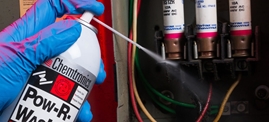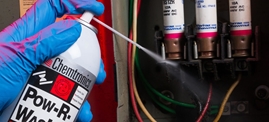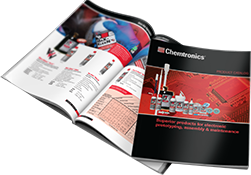
How do I desolder with solder wick / desoldering braid?
Step One: place the wick over the solder to be removed and then place the hot soldering iron over the braid. Step Two: Place the tip at an angle that maximizes heat transfer through the braid to the solder. Use a clean tip that you have just...
Read This Post
How do you measure the thickness of conformal coating?
Measuring the thickness of conformal coating is essential to ensure proper application and adherence to the specified requirements. There are several methods used to measure the thickness, and the choice of method may depend on the type of conformal...
Read This Post
Does your conformal coating meet MIL-I-46058C?
IPC-CC-830 is an industry standard focused on conformal coatings for printed wiring assemblies, while MIL-I-46058 was a military specification for electrical insulating compounds used on printed circuit assemblies, which has since been replaced...
Read This Post
Does your conformal coating meet IPC-CC-830?
Yes, all our coatings meet IPC-CC-830 standards. IPC-CC-830 defines the requirements for electrical insulating compounds, commonly known as conformal coatings, used to protect printed circuit boards and electronic assemblies from environmental...
Read This Post
How do you apply conformal coating to a printer circuit board (PCB)?
Prepare the PCB: Ensure the PCB is clean, dry, and free from any contaminants. Clean it using an appropriate PCB cleaning solution or isopropyl alcohol to remove any dirt, flux residues, or other impurities that could interfere with the coating...
Read This Post
How long does conformal coating take to dry / cure?
The drying and curing time of conformal coatings can vary depending on the type of coating used and the environmental conditions. Conformal coatings are applied to protect electronic components from moisture, dust, chemicals, and other contaminants....
Read This Post
What is conformal coating?
Conformal coatings are typically thin layers of material applied to electronic components or circuit boards to protect them from environmental factors like moisture, dust, chemicals, and mild mechanical stress. They are commonly used in various...
Read This Post
Does conformal coating protect against ESD (static)?
While conformal coatings can offer some level of protection against ESD by providing a barrier between the sensitive electronic components and the surrounding environment, they are not specifically designed as ESD control measures.
Read This Post
What is in "canned air" duster?
Dusters used compressed propellant that when released, spray out with enough force to dislodge dust and other loose contaminents. When these contaminants get in the way of vents or fans within the device, they create a build-up which leads to...
Read This Post
Does your "canned air" duster contain bitterant additive?
None of our dusters contain bitterant. Many consumer dusters include bitterant to prevent "huffing". That bitterant can be left behind as a residue, so should be avoided when cleaning sensitive or critical devices.
Read This Post




